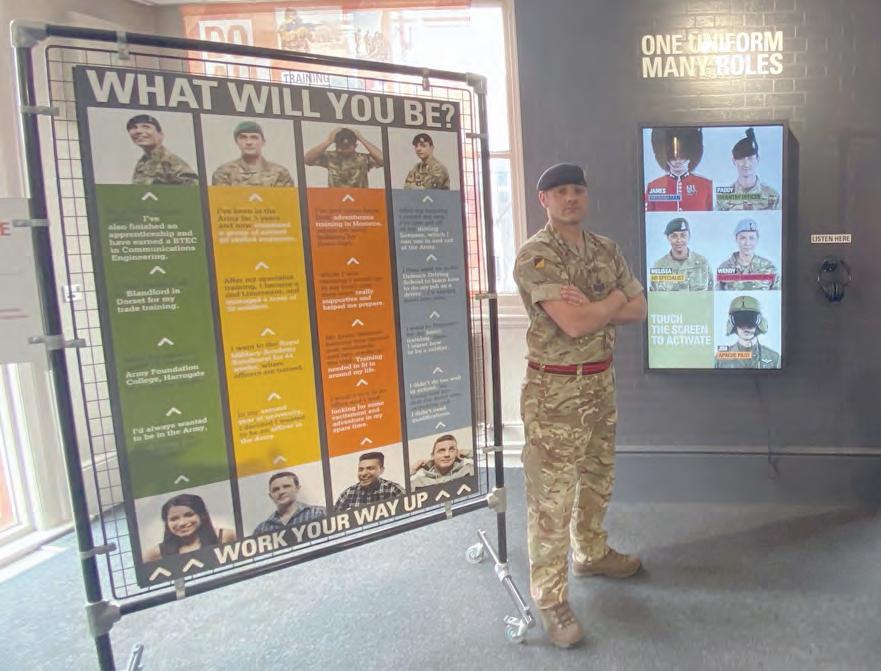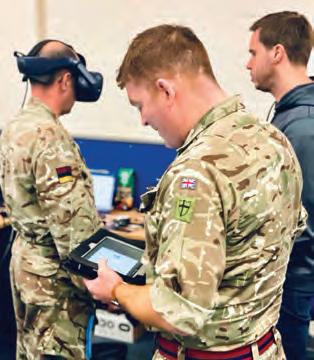
9 minute read
Exploiting Technology
The Digital Readiness Experiment
By Capt Jordan Kemp, Defence Industry Placement at Adarga
The Digital Readiness Experiment (DRE) aimed to test and learn about the ‘digital readiness’ of 1(UK) Division. Over a nine-month period, the experiment followed a realistic Readiness timeline of the Division preparing and deploying on operations overseas.
With support from Adarga - a UK tech start-up which was contracted to create an ecosystem of industry partners - the DRE explored what kinds of software and artificial intelligence (AI) driven technology the Division might equip its people with; in the same way it does with physical equipment. The overarching goal was to get the best digital tools to win in the information domain, drawing from the best from industry to ensure that the solutions presented were world class. The approach also ensured that our soldiers, the users, were invested in the product design from the outset forming a constructive tension between the art of the possible from industry and the art of the practical from the users.
8 Med planners in virtual reality on Ex RC21
There were three objectives of the experiment: to accelerate the Army’s understanding of digital Force-Preparation timelines and processes; to develop viable software and AI-driven technology for experimentation on Ex RHINO CHARGE (RC21 – 1(UK)XX biennial Validation Exercise) and to capture a comprehensive learning account to inform the recommendations to support agility in future innovation and procurement. Overall, there were over 400 Defence personnel and partners from industry involved in the DRE and it was led by a 1-star Steering Group of key Army leaders in digital, innovation and technology invited by Commander 11 Bde, Brig Ben Cattermole.
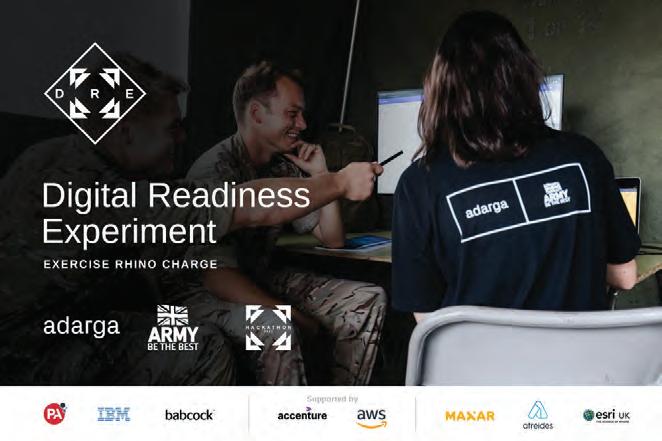
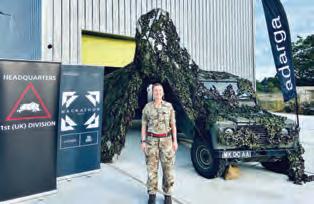
8 Capt Jordan Kemp at Hacakthon
21 held at the British Army Battle Labs
After working as the Regimental Ops Officer at 9 Regiment RLC, I was released as the DRE Project Officer from August – December 2021, before heading to Adarga on a nine-month External Placement in Industry. Throughout both assignments I have remained connected to Army and RLC technology development and thinking, through the work at DSCOM and Director Joint Support at their Cyber TTX; assessing supply chain resilience or on the writing team for the Army’s AI Strategy, which will lay out the roadmap for an “AI-ready Army”.
As the only full-time person working on the DRE, I was responsible for the main outputs which started with helping 104 Bde organise Hackathon 21 at the British Army Battle Labs in Dorset. Hackathon 21 was an innovation event that partnered soldiers with data scientists and engineers to work on problem sets for 48 hours. The problems were all posed by the subordinate brigades, to solve likely operational challenges. On conclusion of the 48 hours, soldiers and industry partners pitched their ideas to a ‘Dragon’s Den’ style panel of military and industry leaders. There were ten teams, representing each of the Brigades in 1(UK)Div. Seven of the prototypes were selected to be developed further for testing on Ex
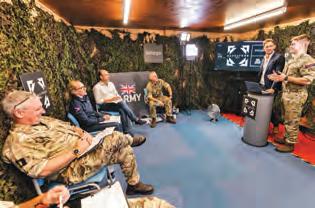
8 In the Dragon’s Den
RC21, including those proposed by teams from 104X led by Capt Alex Wilkins (9 RLC) and 102X led by Lt James Saunders (7 RLC) and Lt Kier Leech (6 RLC) for their excellent solutions for convoy route planning and real-time event tracking.
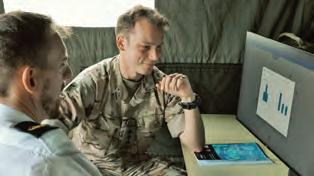
8 Captain Alex Wilkins at Hackathon 21
Working with the developers from the winning seven companies (Adarga, Atreides, Babcock, IBM, Maxar, PA Consulting and Esri), the solutions were developed to working prototypes to deploy into the 1(UK) Div HQ in just six weeks… a significant challenge, working with pan-Defence stakeholders. The prototypes were designed to cut right to the heart of the challenges faced by the planners in the HQ. We developed software that automated the SOHB yardsticks, replacing cumbersome CSS Calculators; a tool that ingests mobile phone diagnostic data that provided invaluable insights for communications planning; a 3D mapping program that allowed planners to fly through a digital twin of the Area of Operations in virtual reality and a tool that tracked casualties from the point of injury all the way through the clinical care pathway.
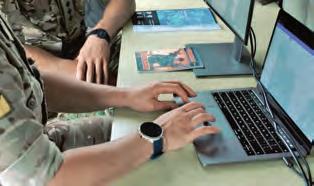
8 On the road to an AI-ready Army
There were 140 users for the software, trained during the RSOI package, and the DRE team measured their use against set performance metrics and collated feedback. Some of users wished they had previous access to the tools to support the pre-deployment phase, others felt that the tool saved them time or gave them access to information they previously wouldn’t have had. Rather than being replaced by the DRE tools, Intelligence or Geo analysts were freed up to do more difficult analysis as the staff had more ready access to quick information requests or visualisation products for their planning. Although none of the tools were individually sufficient to transform the HQ, they offered glimpses of what AI could provide to the staff, to genuinely exploit their data and support their decision making. All the staff saw the potential of the technology increasing their ability to collaborate, to provide continuous shared situational awareness, have AI-predictions capable of supporting their decisions and removing information and technology from stove pipes to be accessible to all that need it.
Throughout the experiment lessons were grouped into four themes - Processes, Culture, Products and Experiment Design published by 1(UK) Div in a lessons document. The DRE is an example of what rapid innovation and concept development can achieve, but in the words of Brig Cattermole: “We have to be ruthlessly honest in asking ourselves if the British Army’s processes are agile enough to enable the rapid exploitation of digital innovation. Our commercial and cyber security protocols are essential, but they must be streamlined and accessible to all.”
The DRE provided further evidence to support 102 Bde Comd’s statement that: “Innovation is an ecosystem which requires the right people, processes, resources and environment to be aligned for success.” The challenge for the Corps is how we harness and cohere this innovation to allow us to operate differently whilst still depending on legacy platforms and evolving force structures. Successful innovation and digital transformation in the Army is widely acknowledged to require a whole-force approach. Our people must have the freedom and power to fix their own problems and we should not take for granted how exciting tackling Defence’s hardest obstacles can be, giving soldiers a sense of fulfilment, empowerment and awareness of new technology and skills.
The Digital Readiness Playbook was published in April 22, with the aim to provide a resource for any project lead, of any rank and at any formation; to lead them through innovating and procuring software and AI driven technology. The aim is to give everyone the freedom to successfully innovate, think and resource ideas to overcome their close challenges and equip our teams with the Digital tools to remain relevant in the age of constant competition.
Both the DRE Playbook and Lesson document can be found on the 1(UK) Div SharePoint site.
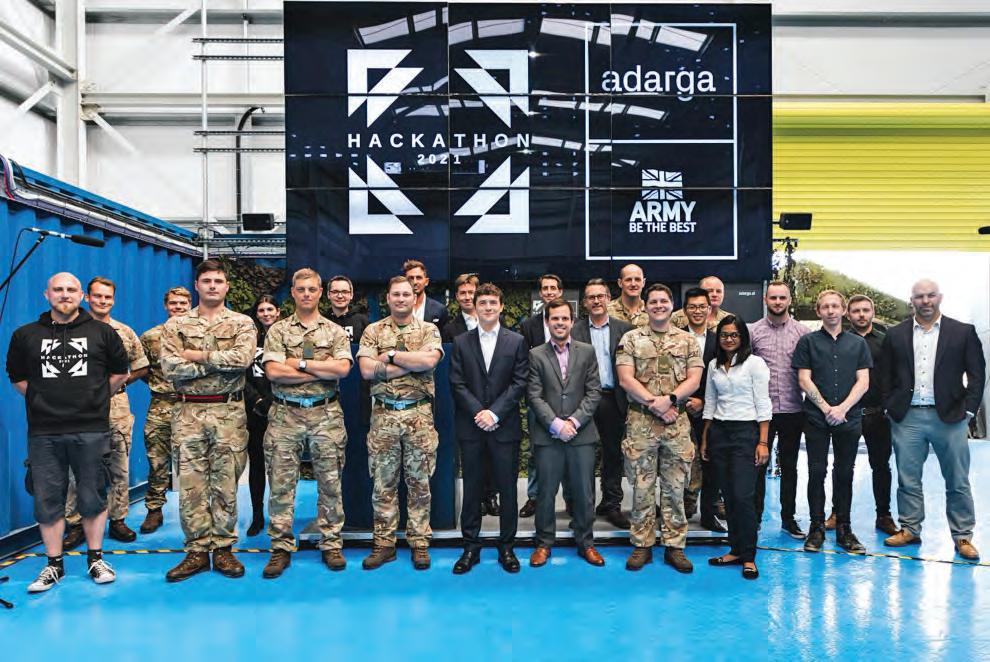
8 Team Hackathon
The RLC Equestrian Club has had a very busy few months. Special congratulations to Sgt Sammie Jones (3 Regt RLC), Pte Elizabeth Ellis and Pte Nick Akuffo (5 FS Bn REME) for graduating from Grass Roots to Corps teams. The Royal Windsor Horse Show –Maj Rose Lambert (9 Regt RLC) Every year, HM The Queen hosts the Royal Windsor Horse Show. In addition to performances from the mounted regiments and many others, the main arena hosts an Inter-Services show jumping competition.
This year, Maj Rose Lambert was selected to represent the Army team, jumping the course on her own horse Fines Fox. Recently back from operations, Maj Lambert’s round went well and the pair completed the course with just eight faults. Royal Tournament Tent Pegging Team – Maj David Puckey (DIO RD) The Tent Pegging Team consisted of Maj Puckey on his own horse Disco, out on her first ever competition and Maj Nigel Prescott (DIO RD) on a hired horse, Schnapps, who he met that morning for the first time.
Maj Prescott and Schnapps formed a quick bond, resulting in a second place in the Individual Sword class, beating mounted duties riders form the King’s Troop and Household Cavalry.
The Tent Pegging Team is looking for new riders to join its ranks. Riders need to be established in a fast canter and have good hand eye co-ordination. Everything else can be taught. This unique sport requires skill and determination to attack and draw targets using a sword or lance from a galloping horse. Royal Tournament Corps Eventing Team – Maj Hannah Hewins (Army HQ) Members of the Corps Eventing Team attended The Royal Tournament on 20-24 Jun 22 to compete in Show Jumping, culminating with the Derby.
There were new rider/horse combinations this year - Maj Hewins and Simba; Pte Leung (151 Regt RLC) and Jay and Sgt Jones (3 Regt RLC) and her hireling Billy.
RLC Equestrian
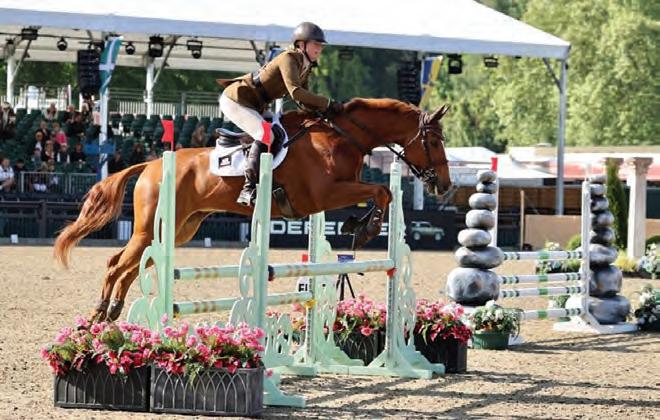
The team was joined by Maj Lambert on Fines Fox. This was Sgt Jones’ first competition as a Corps Rider having been selected to compete from the grass roots cohort.
Our Corps riders were supported on the ground by Pte DowneyBrown (9 Regt RLC). One of the Grass Roots’ newest riders, it was her first grooming experience for the team. Despite this, she very quickly adapted to the horse and rider needs – a demanding job with four horses to assist. This was Pte Leung’s second year competing for the Corps and his first on his own horse. They put up a sterling performance showing real promise. Polo – Capt Nikki Hemsworth (RAFC Cranwell) The first tournament of the season was the Women in Polo Military Ladies’ tournament on 2 May 22. Fresh from training in South Africa were Lt Col Lucy Anderson (APC), Capt Nicky Hemsworth and OCdt Tilly Harrison (BUOTC) were ably supported by two external players, Lucie Barker and Joy Senior. The first game of the day was against the Royal Signals, with goals from Lucy and Lucie securing a victory. The second game was against a Tedworth Park team for the title. The RLC team held the Tedworth Park team, however Tedworth Park prevailed in the final seconds.
The RA Cup on 2 Jun 22 saw Lt Col Lucy Anderson, Maj Nigel Prescott, Capt Nicky Hemsworth, team captain Capt Nick Lowe (33 Engr Regt)and OCdt Tilly Harrison enter the pitch. The team had a strong start against the Royal Lancers. Sadly a mistake in the RLC goal meant the game went to penalties which unfortunately did not secure an RLC win. The Royal Navy was the next opponent, but after Capt Lowe was unseated, breaking his arm, the team could not quite recover.
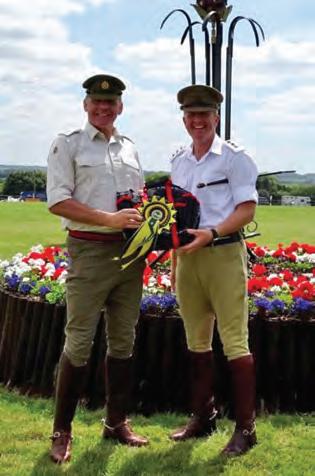
8 Tent Pegging: Maj Prescott receives his
prize represented the Army at RWHS
8 Royal Windsor: Maj Lambert

